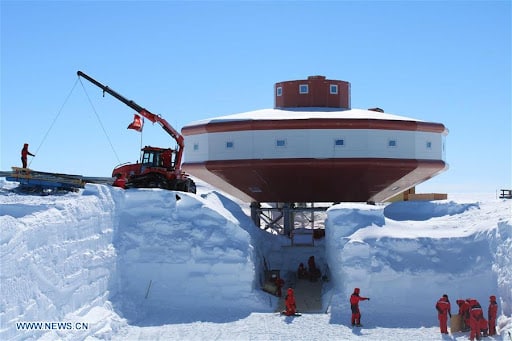China Launches Antarctic Expedition, Blocks Key Conservation Proposals

On Friday, China started its 41st expedition to Antarctica, showing a growing interest in the Southern Ocean. This time, China is using three ships for the mission. Two of these ships are icebreaking research vessels named Xuelong and Xuelong 2. The third ship is a cargo vessel called Yongsheng, which is carrying supplies for the mission.
This expedition will last until May 2025. For the first time, scientists from Hong Kong are joining the mission. This is an important step in cooperation between mainland China and Hong Kong in research related to polar science. Chan Kwok-Ki, the Chief Secretary of Hong Kong, was present at the send-off event for the mission at the Guangzhou Nansha International Cruise Port. He traveled with six scientists from Hong Kong who were selected to participate in the expedition.
During their time in Antarctica, the researchers will work on building facilities for the Qinling Station. This station is located on the ice-free Ross Sea and is the fifth research station set up by China in Antarctica, which opened in February. The researchers will also continue studying the effects of climate change on the Antarctic environment. They will monitor the environment in important areas like Prydz Bay in East Antarctica, the Cosmonauts Sea, the Ross Sea, the Amundsen Sea, and the Antarctic Peninsula.
While China increases its activities in Antarctica, it has faced criticism for collaborating with Russia to change how the region is governed. Recently, at the annual meeting of the Commission for the Conservation of Antarctic Marine Living Resources (CCAMLR) in Hobart, Australia, China and Russia blocked important proposals aimed at protecting marine life in Antarctica. Some of these proposals included creating four new Marine Protected Areas (MPAs) in the region. Since 2016, China and Russia have opposed this proposal, even though most CCAMLR members support it.
In addition to this, both countries voted against renewing a management measure for krill fishing that has been in place for over 30 years. This measure limits krill fishing near the Antarctic Peninsula to no more than 620,000 tons. Another 620,000 tons of krill can be fished in other areas of Antarctica. This is important because it prevents too much fishing in one place. However, CCAMLR members must renew this measure every year.
Krill are small shrimp-like creatures that serve as a vital food source for many animals in Antarctica, including penguins, seals, and whales. Tony Press, a former head of the Australian Antarctic Division (AAD), expressed concern, saying, “The precautionary principle on fishing restrictions in Antarctica that has been supported by CCAMLR countries has gone backwards. This sets a very bad precedent for the future.”
